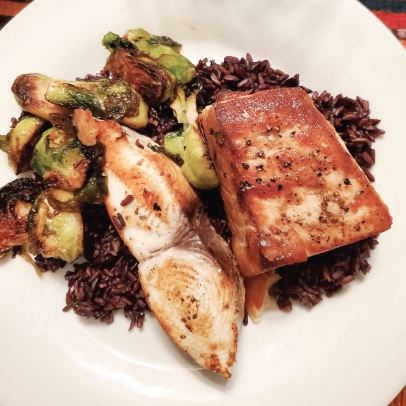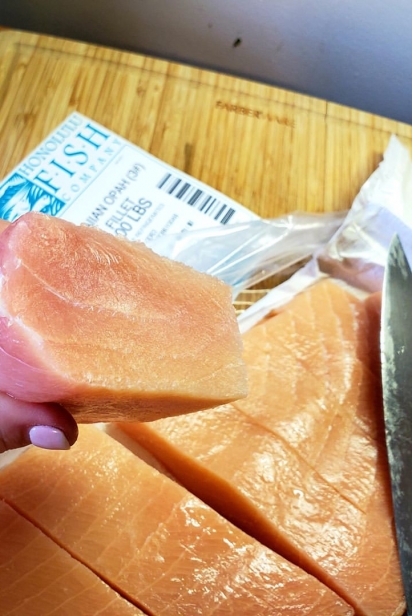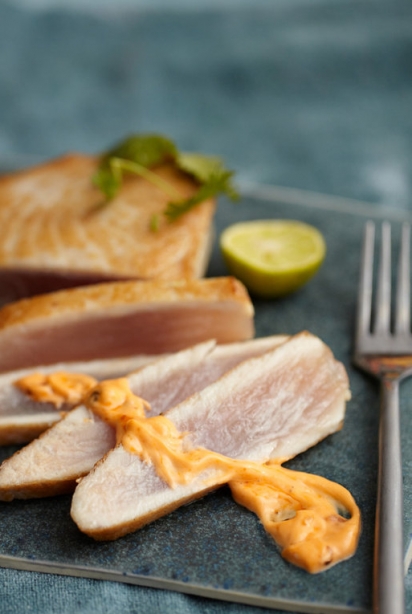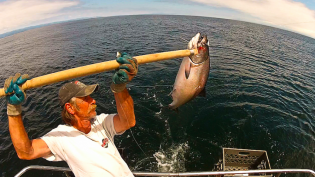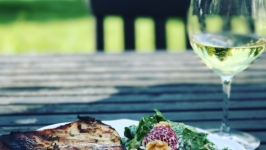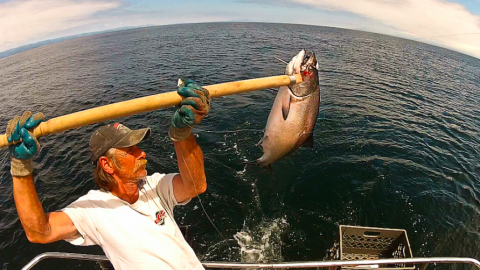From Boat to Plate
Honolulu Fish Co. is 2,500 miles away from the vast majority of its customers—and more than 4,300 miles from Indy—yet they continually provide individuals and restaurants alike with glorious, sustainable, delicious seafood. Straight off the boats and straight out of the pristine, nutrient-rich Pacific waters surrounding the Hawaiian Islands, Honolulu Fish Co. has built a successful business selling a perishable product to a large customer base with little to no face-to-face contact.
“We’ve never seen or met (our customers) in person,” says Honolulu Fish Co. owner and fishmonger Wayne Samiere. “Ninety-nine percent of our customers don’t live in Hawaii … our product delivery to them is our only contact.” Knowing this, Samiere adds that it’s vital the company is “exact” with their product description as, he says, wild-caught fish can be extremely variable. Which is exactly why those of us living in the land-locked Midwest, can rest assured that the fish Samiere and his team provides is some of the best seafood on the market.
A trained marine biologist who once worked for the National Oceanic and Atmospheric Administration, Samiere launched Honolulu Fish Co. in his garage with a computer and a fax machine more than 20 years ago. Today, his business has grown exponentially and the company supplies home cooks, top chefs and renowned restaurants across the U.S. with more than 30 varieties of boat-fresh, sustainably line-caught Pacific water fish.
Sustainably caught, responsibly managed
“Most of our fish come from the Hawaii longline fishing fleet made up of about 160 boats. Every morning, our buying crew goes down to the dock to meet the boats, search through the catch and pick out the fish we want to buy. Our success,” he adds, “has been our ability to select the fish we sell and (therefore) offer very consistent quality to our customers.
“Hawaii’s fishing industry is the most heavily regulated, monitored and managed fishery in the United States,” says Samiere. “ The guiding principles of Honolulu Fish Co. is to only work with well-known and well-managed fisheries. We don’t support fisheries in countries that practice damaging techniques and who don’t have a resource management plan. In general, good quality comes from good operators. And good operators hold resource management as the highest guiding principle.”
Growing up on the docks of the bay
Born and raised in San Francisco, Samiere says his parents are down to earth farmers, with French-Creole origins straight out of the Louisiana bayou.“I grew up with Creole and Southern food—fish, crab, crawfish and gumbo. I was the fisherman in the family. I fished for crab and fish along the abandoned piers of the San Francisco harbor and was good at it. I even sold my extra catch to neighbors.”
As for his favorite type of fish, Samiere says that if he had to choose just one, it would be ahi.
“Fresh, high-oil content Ahi is my all-time favorite fish. There is nothing like it and I have eaten every kind of fish there is. There is a reason the Japanese hold high-quality Ahi with such regard—and I understand that reason intimately.”
There are all kinds of different ways to prepare seafood be it ahi or something else, but when it comes to cooking his favorite (ahi) for himself and his family, Samiere drifts to his roots and prepares it with a Creole-seasoning rub before slightly searing it.
“I then refrigerate it for 24 hours and eat with wasabi aioli.”
Today, Samiere lives just outside of Honolulu, about 15 minutes from Waikiki on the eastern tip of the island of Oahu.
“I live on a Marina and have a fishing boat docked next to my living room,” he said. “My wife and I are avid fishing people. Every chance we get, we jump on our boat and motor out 20 minutes to our favorite fishing spots looking for tuna, mahi, reef fish and crab. Being on the water in Hawaii is something you never get tired of. So, to relax from a day of selling fish,” says Samiere, “I come home and go fishing. I think it’s a genetic defect—something to do with Creole blood and being raised on crawfish.”
Visit HonoluluFish.com to learn more about the Honolulu Fish Co., and order today’s fresh catch straight to your front door.
How to Cook Fresh Fish
While there are a ton of recipes floating around (pun intended) for seafood, in all honesty you really don’t need a recipe to cook a great piece of fresh fish. So try this foolproof, simple method … First, start with a great piece of fish like ono (the longer of the two) and opah (the thicker piece) seen here. The fish—no matter the species—should be clear and bright, with no indentations.
Rinse fish, lightly pat dry and place on plate. Drizzle both sides with a touch of EVOO. Place fish, skin side down—if skin is still intact—in a heated pan and cook for 3 minutes. Optional, add a tablespoon of ghee (I don’t recommend butter as it burns too quickly). Turn fish every 2-3 minutes until each side has been exposed to the pan. Note, you will need to adjust your cook time for anything thinner, or thicker. Add some cracked pepper, sea salt and a fresh lemon if you like. Serve with whatever sides float your boat. We did both a small serving of ono and one of opah over black rice with sauteed brussels sprouts, and then for an even lighter meal, grilled asparagus and brussels sprouts with a nice chunk of opah. Oh, and don’t forget the chardonnay ; )


